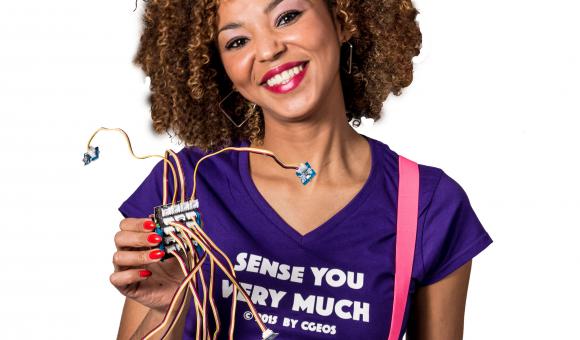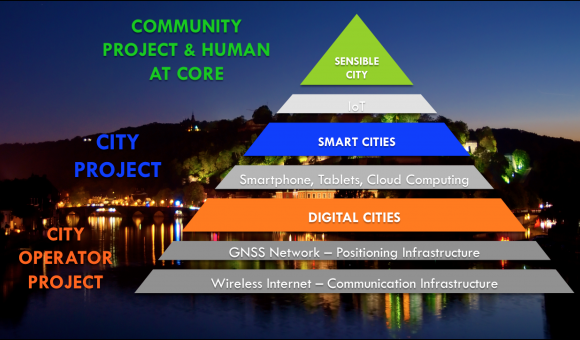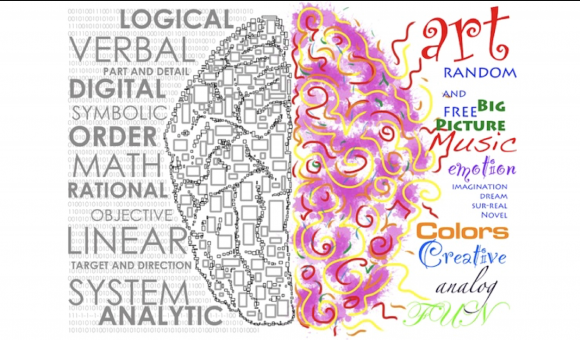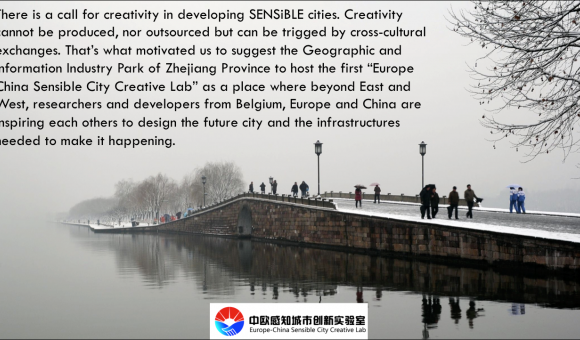
Belgium is a country of 30,528 km2 with a population of 11,239,755, which makes it at most the size of a large Chinese city. Although there is unprecedented interest in developing smart cities, we could ask whether this applies to Belgian cities and other smaller cities, particularly as there is no explicit single definition. This lack of clarity is a godsend for politicians, who can use it however they want to give themselves a trendy or connected image.
A smart city is characterised as one that uses information technologies to make the critical components of its infrastructure and services - which include the administration of the city, education, health, public safety, real estate, transport and public services - smarter, more inter-connected and more efficient.
Although small, Belgian cities also have to deal with issues relating to traffic management, safety, communicating with the population on administrative issues, housing, etc., but the management bodies of large Belgian cities have been using information technologies to address the challenges posed by an urban community and the management of its infrastructures for over twenty years now. In short, we did not wait for smart cities to carry out digital mapping in a geographical information system, with all the management applications of the networks, the land registry, public lighting and the optimisation of public transport. The e-governance tools are not new either.
Whether we are in Belgium or China, we all expect a city to be welcoming, inviting and above all desirable for all and by all. A space that promotes the emergence of new living communities. Should we not start by developing sensitive cities rather than smart cities? Base them around people, not technology? Use technology to connect people to their spaces, which would then become interactive?
Depending on our approach, a sensitive city must be able to register and express its feelings, remind you that you are part of a community, that this is where we work, study, trade, live and relax with family and friends... with charming little areas and an environment whose history influences and will continue to influence its industrial, artistic, cultural and technological development. A city whose management is efficient and discrete. A city that cares for and is sensitive to all its residents and adapted to each one, whether they are visually impaired, have reduced mobility, are poor, emigrants, etc.
If that seems poetic or utopian, we should mention that the technologies for developing sensitive cities are more ambitious than those used for smart cities, because when we want to express ourselves we use all our senses. And the senses we have are now relayed and amplified by sensors, which are also connected by the Internet (Internet of Things or IoT).
A public bench or a tree, fitted with sensors, will be capable of memory and of expressing sensations. Cold, rain, heat, pollution, the seasons... we will be able to find them on the social network of a city's public benches or trees and this will bring us closer. When you cross a bridge or walkway that straddles the rivers around which many cities have grown (using river transport), the city will recognise you because you will have registered in the community developed around it. It will be attentive to children and people with reduced mobility. A first kiss will thus be memorised more securely than a bit of graffiti that the rain soon removes all trace of. A ride on a connected, geo-localised bike will allow you to share with friends and urban development managers not only the levels of light and noise, the state of the road and the air quality, but also your emotions. Every person and every mobile will become the vector of a number of ambient and geo-localised sensors.
For the Media Lab of the famous MIT in Boston, USA, the Internet of Things aims to enchant our spaces and cities, which will then become more sensitive. We will create emotional maps of cities (this already happens in England and in the United States), as ever since the Italian writer Italo Calvino talked about invisible cities, we have understood that one city hides many others depending on our affinities, our feelings and our experience.
The data from the sensors can also be exchanged in the same way we currently share photos, texts and statuses on social media. Rather than analyse impersonal Big Data flows, it is the inhabitants of the sensitive city who will pass on information that could help urban development managers. And the pooling of this free or paid information will allow new media techniques to express it in real time on 3D screens or other media yet to be invented.
Being able to hear urban objects express themselves will also raise those heads currently bent over their tablets and living in a virtual world of solitude concealed by cybernetic relationships. Interacting with the real world, being involved, participating and becoming responsible require an effort; we know from watching children that things soon stop being an effort when they are simple! And the Internet of Connected Things is simple!
Some of the data from the sensors installed on infrastructures, on public transport and in public spaces will be available to everyone to create new applications that can generate jobs and new economic entities.
In becoming sensitive, will cities not become smart? Are the left and right sides of the brain not part of the same head? That is what we believe and are developing with the team of architects, urban planners, IT specialists, geometrists, software developers, media specialists and professionals in creating media events, as well as artists and urban development managers assisted by academic institutions.
However, this "sensitive" form of the city will not be due to the authorities. It will be the contribution of creative businesses and private initiatives that will have to access the public and shared data collaboratively to develop applications and interfaces, designing new economic models to guarantee their profitability. The Open Source Hardware and Software resources and the setting up of infrastructures (communication, positioning, etc.) are linked to this development.
While we cannot buy happiness and talent, likewise creativity is not produced in a laboratory or outsourced. The creativity required to invent sensitive cities can be promoted and emulated through strong multi-cultural exchanges and that is why we believe that a new relationship must be formed beyond a simple East-West dialogue. It is this motivation that led us to ask the geographical technology research park in Deqing to house a laboratory dedicated to sensitive cities.
Will Namur in Belgium and Deqing in Zhejiang Province, China, be the first sensitive cities? This is what we are hoping, so that next time you come to Namur, you really will be able to greet Franswé on the Place d'Arme and he will reply in Flemish or Chinese... and that you will use the new walkway and hear the melody of the Sambre and the Meuse, joining together and singing about their love for a city that has become the heart of Wallonia.
Joël van Cranenbroeck, Managing Director CGEOS – Creative Geosensing sprl-s






